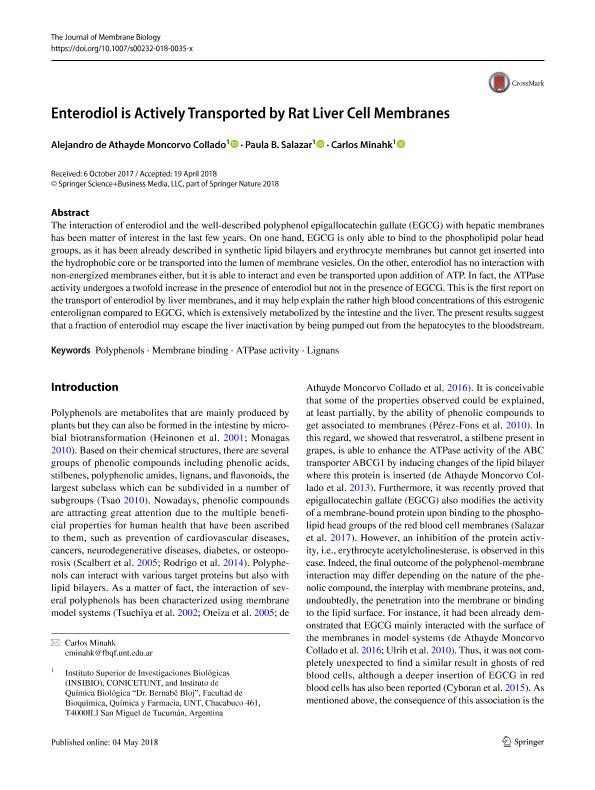Artículo
Enterodiol is actively transported by rat Liver cell membranes
Fecha de publicación:
08/2018
Editorial:
Springer
Revista:
Journal of Membrane Biology
ISSN:
0022-2631
e-ISSN:
1432-1424
Idioma:
Inglés
Tipo de recurso:
Artículo publicado
Clasificación temática:
Resumen
The interaction of enterodiol and the well-described polyphenol epigallocatechin gallate (EGCG) with hepatic membranes has been matter of interest in the last few years. On one hand, EGCG is only able to bind to the phospholipid polar head groups, as it has been already described in synthetic lipid bilayers and erythrocyte membranes but cannot get inserted into the hydrophobic core or be transported into the lumen of membrane vesicles. On the other, enterodiol has no interaction with non-energized membranes either, but it is able to interact and even be transported upon addition of ATP. In fact, the ATPase activity undergoes a twofold increase in the presence of enterodiol but not in the presence of EGCG. This is the first report on the transport of enterodiol by liver membranes, and it may help explain the rather high blood concentrations of this estrogenic enterolignan compared to EGCG, which is extensively metabolized by the intestine and the liver. The present results suggest that a fraction of enterodiol may escape the liver inactivation by being pumped out from the hepatocytes to the bloodstream.
Palabras clave:
ATPASE ACTIVITY
,
LIGNANS
,
MEMBRANE BINDING
,
POLYPHENOLS
Archivos asociados
Licencia
Identificadores
Colecciones
Articulos(INSIBIO)
Articulos de INST.SUP.DE INVEST.BIOLOGICAS
Articulos de INST.SUP.DE INVEST.BIOLOGICAS
Citación
de Athayde Moncorvo Collado, Alejandro; Salazar, Paula Belén; Minahk, Carlos Javier; Enterodiol is actively transported by rat Liver cell membranes; Springer; Journal of Membrane Biology; 251; 4; 8-2018; 593-600
Compartir
Altmétricas




